Plants known by the name “daffodil,” “narcissus,” and “jonquil” are properly Narcissus; they belong to the botanical genera Narcissus.
Gardeners refer to large-flowered Narcissus as daffodils, small-flowered early-blooming Narcissus as narcissus, and Narcissus that blossom in clusters as jonquil.
All Narcissus have the same basic flower structure. Each bloom has a perianth (six outer petal-like segments) held at right angles to the central corona (which is called trumpet or cup depending on its length).
Narcissus flowers are borne singly or in clusters. Yellow and white are the two basic colors, with shades of orange, red, apricot, pink, and cream. Leaves can be straight and flat or narrow and rushlike.
Narcissus aficionados divide Narcissus into types or divisions. Here are the 11 most common divisions of Narcissus:
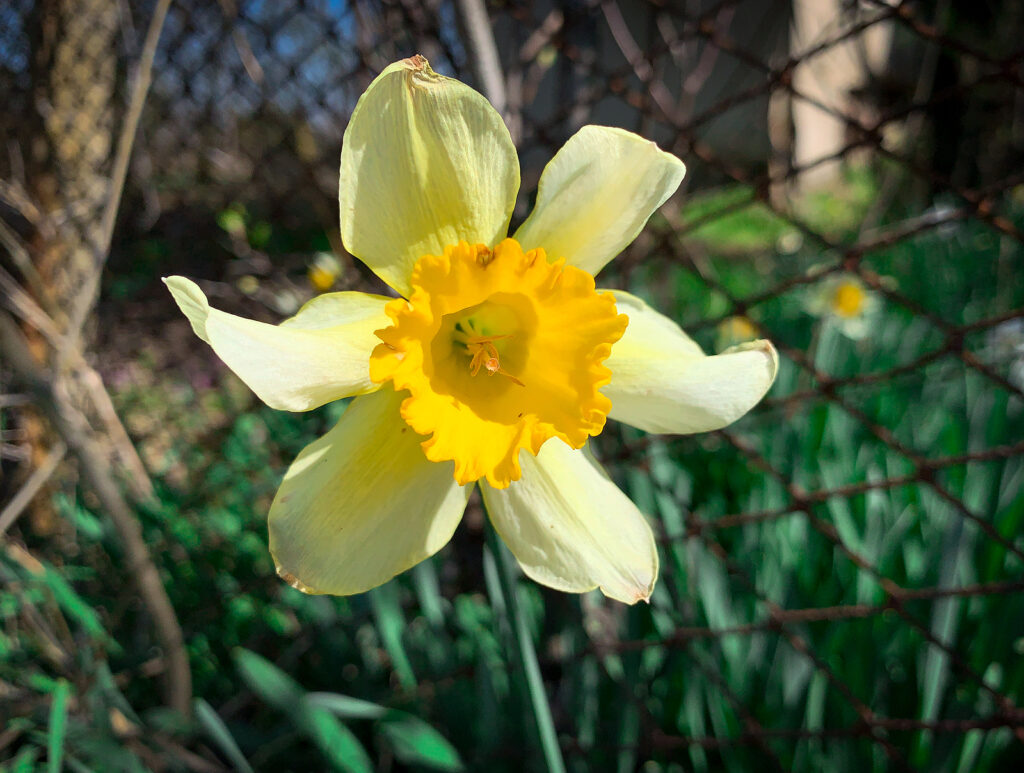
Trumpet narcissus
Trumpet daffodils (Division 1)
These bear one flower per stem with a trumpet corona as long as or longer than the “petals” or perianth segments Trumpet hybrids bloom in early to mid-spring and range from 12 to 20 inches (30-50cm) tall. Best known are ‘King Alfred’, and ‘Dutch Master’, both have all-yellow flowers. Other all-yellow cultivars are ‘Marieke’ and ‘Primeur.’ Pure white varieties include ‘Mount Hood’, ‘Beersheba’, and ‘Empress of Ireland’. Bicolor members of this division include ‘Bravoure’, ‘Las Vegas, and ‘Topolino’.
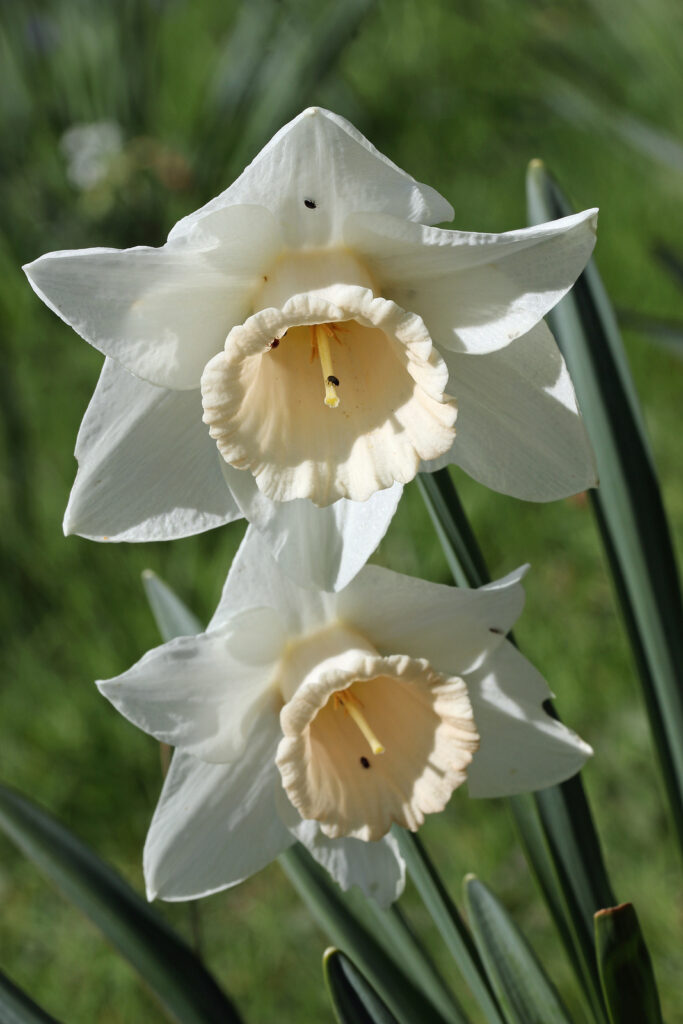
Large -cupped daffodils (Division 2)
Large-cupped daffodils are also called long-cupped daffodils. These bear one flower per stem with a cup (corona) that is more than one-third the length of the “petals” or perianth segments, but not as long as the perianth segment. These cultivars usually bloom in mid-spring and range from 10 to 20 inches (25-50cm) tall. Varieties include ‘Stainless’ (white); ‘Carlton’ and ‘Saint Keverne’ (both yellow). Bicolor cultivars include ‘Fortissimo’, yellow perianth, orange cup; ‘Ice Follies’ white perianth, yellow cup; ‘Peaches and Cream’, creamy white perianth pale peach cup; ‘Redhill’ creamy white perianth blushed with yellow, red cup; ‘Salome’, white perianth, pink cup rimmed with gold.

Small-cupped daffodils (Division 3)
Small-cupped daffodils are also called short-cupped daffodils. These bear one flower per stem with a cup (corona) that is equal to or less than one-third the length of the “petals” or perianth segments. These cultivars usually bloom from mid-to-late spring and range from 14 to 18 inches (35-45cm) tall. Varieties include ‘Barrett Browning’, white segments, orange-red cup; ‘Barrii Conspicuus’, yellow perianth and yellow, red-banded cup; ‘Queen of the North’, white perianth, small pale-yellow cup.
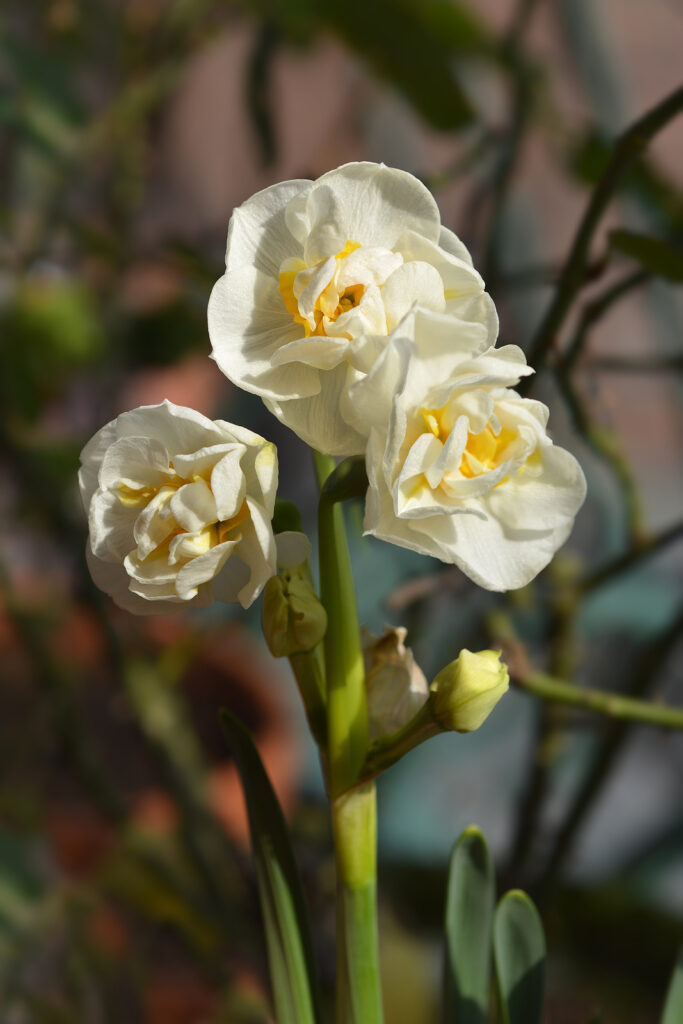
Double daffodils (Division 4)
These daffodils bear double flowers—the corona and/or the “petals” (perianth segments) may be doubled—the cup segments are separate rather than joined together. Flowers are either solitary or borne more than one bloom per stem. Plants range from 14 to 18 inches (35-45cm) tall. Double cultivars with solitary blooms include ‘Acropolis’, white blooms flecked with red in the center. ‘Flower Drift’, creamy white flecked with yellow-orange in the center. ‘Manly’, pale yellow with a rich orange center. Doubles that bear more than one flower per stem include ‘Bridal Crown’, clusters of two to three white flowers with orange-yellow segment; ‘Yellow Cheerfulness’, with clusters of two to three yellow blooms.
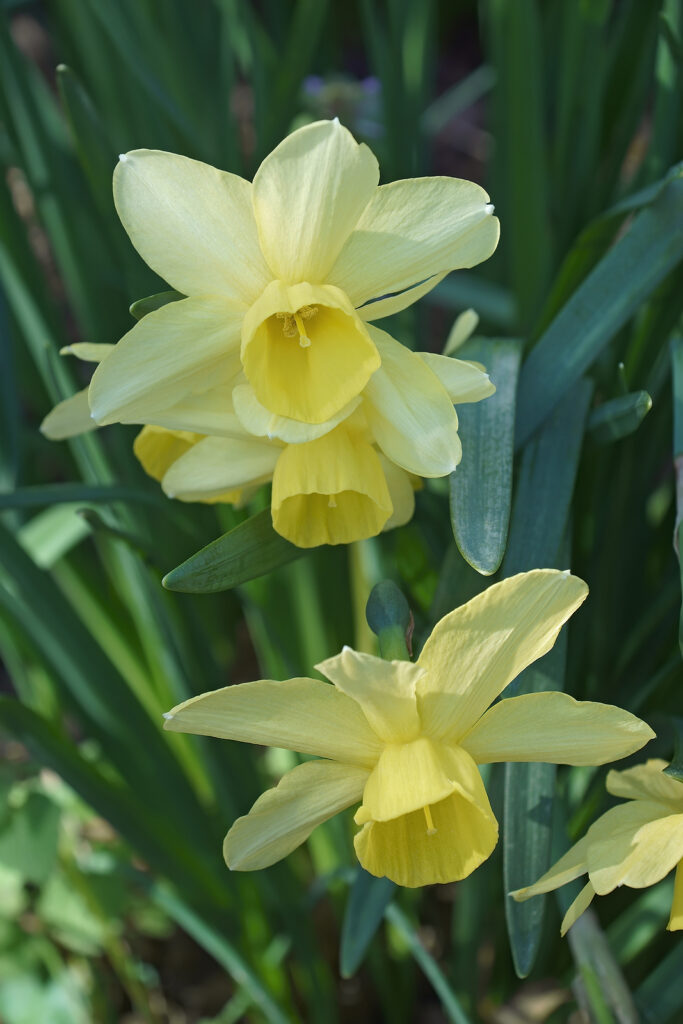
Triandrus daffodils (Division 5)
Triandrus daffodils have umbels of two to six small nodding flowers that usually have short cups and reflexed “petals’ or perianth segments. The cup is at least two-thirds the length of the perianth segments. These cultivars bloom in mid-to-late spring. Plants are 12 to 14 inches (30-35cm) tall. Cultivars include ‘Thalia’, with clusters of two to three fragrant white flowers, ‘Petrel’, with clusters of three to five fragrant white flowers; ‘Stint’, with clusters of three to five lemon-yellow flowers.

Cyclamineus daffodils (Division 6)
Cyclamineus daffodils have solitary flowers and reflexed “petals” or perianth segments. These bloom in early to mid-spring and are 10 to 14 inches (25-35cm) tall. Cultivars include yellow ‘February Gold’; ‘Jack Snipe’, with a white perianth, yellow cup; ‘Jetfire’, yellow perianth, orange-red cup; and ‘Peeping Tom’, all yellow.
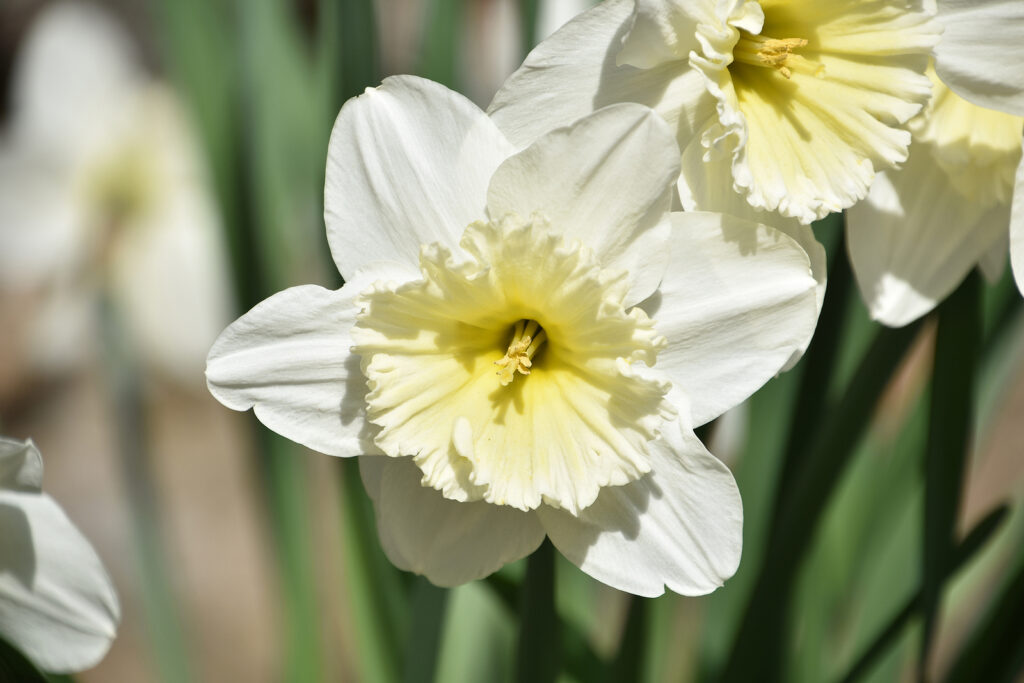
Jonquilla daffodils (Division 7)
Jonquilla daffodils bear umbels of one to five flowers with small cups and spreading “petals” or perianth segments. They bloom in mid-to-late spring and often have fragrant flowers. Foliage is nearly cylindrical and rush-like. Plants grow 12 to 16 inches (30-40cm) tall. Cultivars include ‘Baby Moon’, 8-inches tall with miniature clusters of all yellow flower per stem; ‘Bell Song’ with clusters of three to five fragrant flowers with creamy white perianths and rose-pink cups; ‘Quail’ is solid yellow.
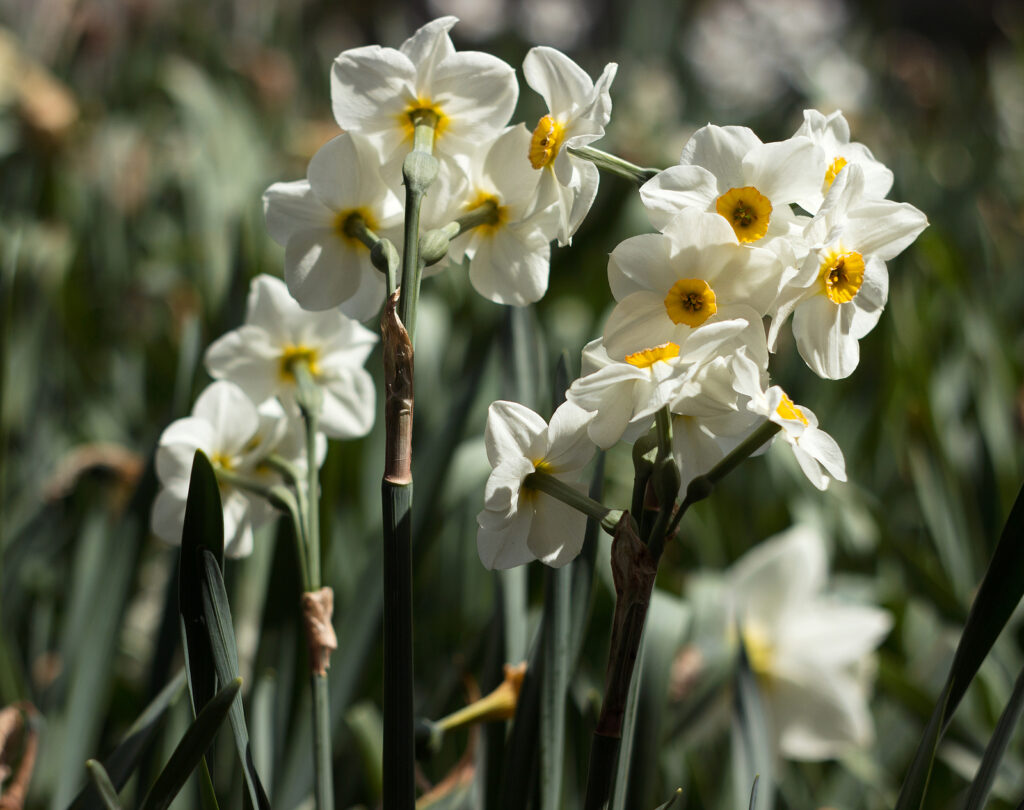
Tazetta daffodils (Division 8)
Tazetta daffodils have small flowers in umbels of 3 or 4 or as many as 20 flowers. They have small cups and broad “petals” or perianth segments. The flowers are very fragrant. They range from 12 to 16 inches (30-40cm) tall. Cultivars include ‘Avalanche’, with clusters of 15 to 20 flowers with white perianths and yellow cups; ‘Geranium’ with clusters of three to five flowers that have white perianths and orange-red cups; ‘Scarlet Gem’ with clusters of three to five flowers with yellow perianths and red-orange cups; and ‘Silver Chimes’ with 8 to 10 fragrant flowers per stem.

Poeticus daffodils (Division 9)
Poeticus daffodils have small disk-shaped red-rimmed cups and broad white “petals”, or perianth segments. The flowers are fragrant and usually borne one per stem. Poeticus daffodils bloom from mid-to-late spring and range from 14 to 18 inches (35-45cm) tall. Cultivars include ‘Acaea’ with broad whiter perianth segments surrounding a yellow cup edged in dark red; and ‘Pheasant’s Eye’.
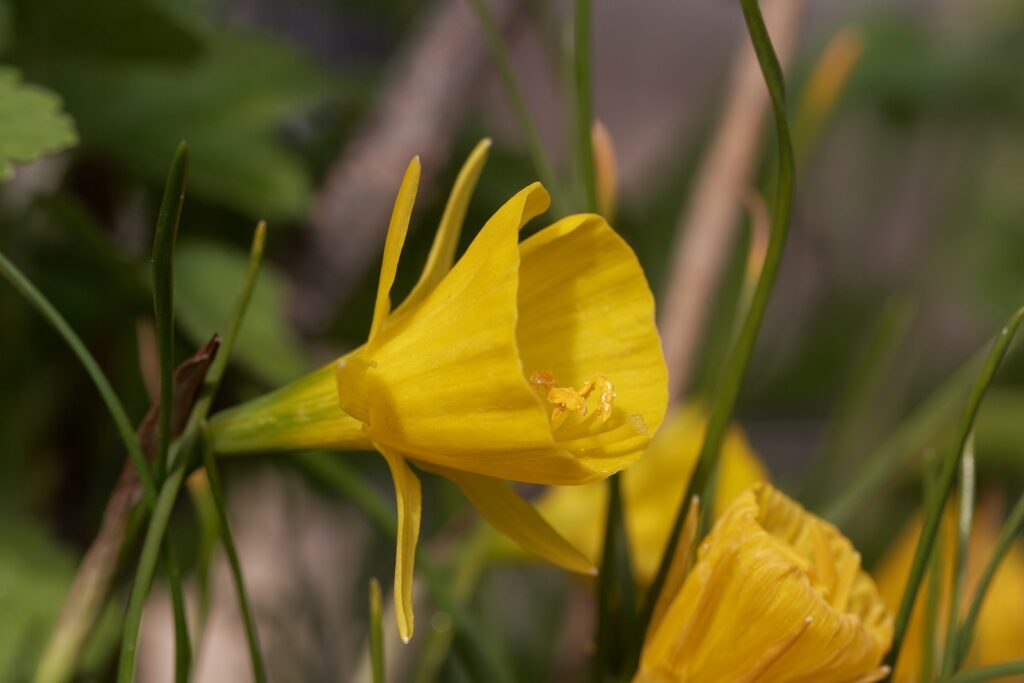
Wild Species (Division 10)
This division includes wild daffodils species include Narcissus bulbocodium, hoop petticoat daffodils which grow 4 to 6 inches tall (10-15cm) and bear small yellow flowers; Narcissus jonquilla, wild jonquil which grows 12 inches (30cm) tall with golden yellow flower.d
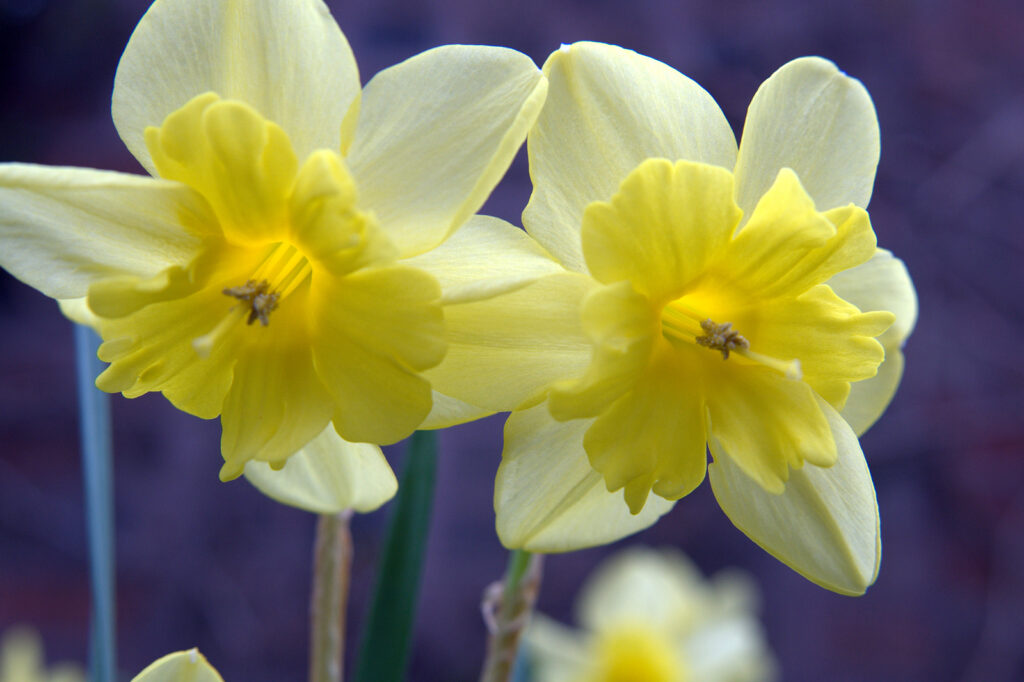
Split-corona daffodils (Division 11)
Split-corona daffodils bear solitary flowers with a trumpet or cup (corona) that is split for more than half its length. These bloom from mid to late spring. Plants range from 14 to 18 inches (35-45cm) tall. Cultivars include all yellow ‘Triparite’; ‘Cassata’ and ‘Smiling Twin’ with white perianth segments and yellow cup; ‘Hungarian Rhapsody’ with white segments, and pink cup.
Also of interest:
How to Grow Narcissus, Daffodils















